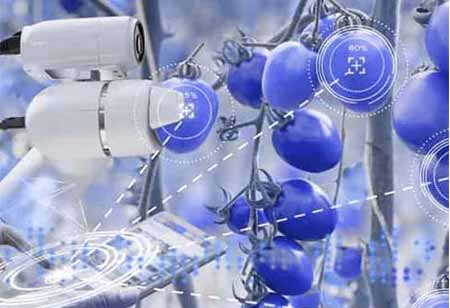Thank you for Subscribing to Agri Business Review Weekly Brief
Appearing Technologies in Agriculture For Economic Sustainability.
The global demand for food continues to rise and is projected to increase to 102% to satisfy the requirements of 9 billion people by 2050.

By
Agri Business Review | Thursday, March 10, 2022
Stay ahead of the industry with exclusive feature stories on the top companies, expert insights and the latest news delivered straight to your inbox. Subscribe today.
Technological advancements are currently integral to attaining sustainability goals in agriculture.
FREMONT, CA: The global demand for food continues to rise and is projected to increase to 102% to satisfy the requirements of 9 billion people by 2050. Accordingly, agricultural production needs to increase by 60%–70% to ensure the supply of raw materials for food, feed, and fiber.
Despite today’s sustained and enhanced pressure on global resources, ensuring a sustainable future means that each actor in the food system requires to commit themselves to develop and enforcing practices. That will decrease the use of natural resources where possible and reuse, recycle, and repurpose them otherwise.
Government entities can help these efforts by implementing policies and strategies for efficient resource management on both national and local levels.
Accepting sustainable farming practices worldwide contributes to the agroecosystem’s efforts to meet the world’s current food needs while guaranteeing that future generations can meet theirs with their limited resources.
Furthermore, these practices also focus on holistic development that incorporates environmental, social, and economic sustainability, the three fundamental pillars of sustainable development.
Emerging Technologies: How Do They Support Ensure Economic Sustainability?
Technological advancements are currently integral to attaining sustainability goals in agriculture. Satellite and GPS technologies, smart irrigation, drones, sensors, and automation, to list a few, give the means for precision agriculture, which further aids in effective resource utilization.
Although they reduce the use of harmful agrochemicals and, on the other, they help conserve non-renewable resources. They also help agriculturists prepare days for unseasonal or extreme weather events, reducing crop losses.
Other technologies that promise to promote sustainability are blockchain technologies for food safety using greater transparency, controlled environmental agriculture (CEA), and biotechnology, together with 3D printing technology that enables the production of food products while saving time and energy.
Scientific research and improvements in agriculture enable farmers to employ the best of traditional and technology-led crop production for nutritious, high-output yield while causing as little damage to the environment as possible and ensuring cost-effectiveness. With adequate and timely information, even remotely-located rural farmers can adopt climate-resilient and sustainable farming practices that result in economic gains.
One of the means for a stakeholder to achieve economic sustainability is by attaining optimal production quantities at lower production costs. Data from satellite images, sensors, and IoT devices facilitate wise decisions to optimize farm operations by utilizing as minimal resources as possible and mitigating risks to understand optimal crop yields.
Traceability solutions make Agri supply chains more transparent and give stakeholders increased control over operations and quality compliance. It allows them to identify and address issues, like food loss or wastage, and recognize opportunities to make processes cost-effective.
They also help decrease the stakeholders’ response time to food crises, thus saving millions of dollars in losses. In addition, traceability to source, along with accurate certification and product labeling, provides agri-enterprises with a competitive edge that helps improve their access to local and international markets and leads to better price realization for smallholder farmers.





